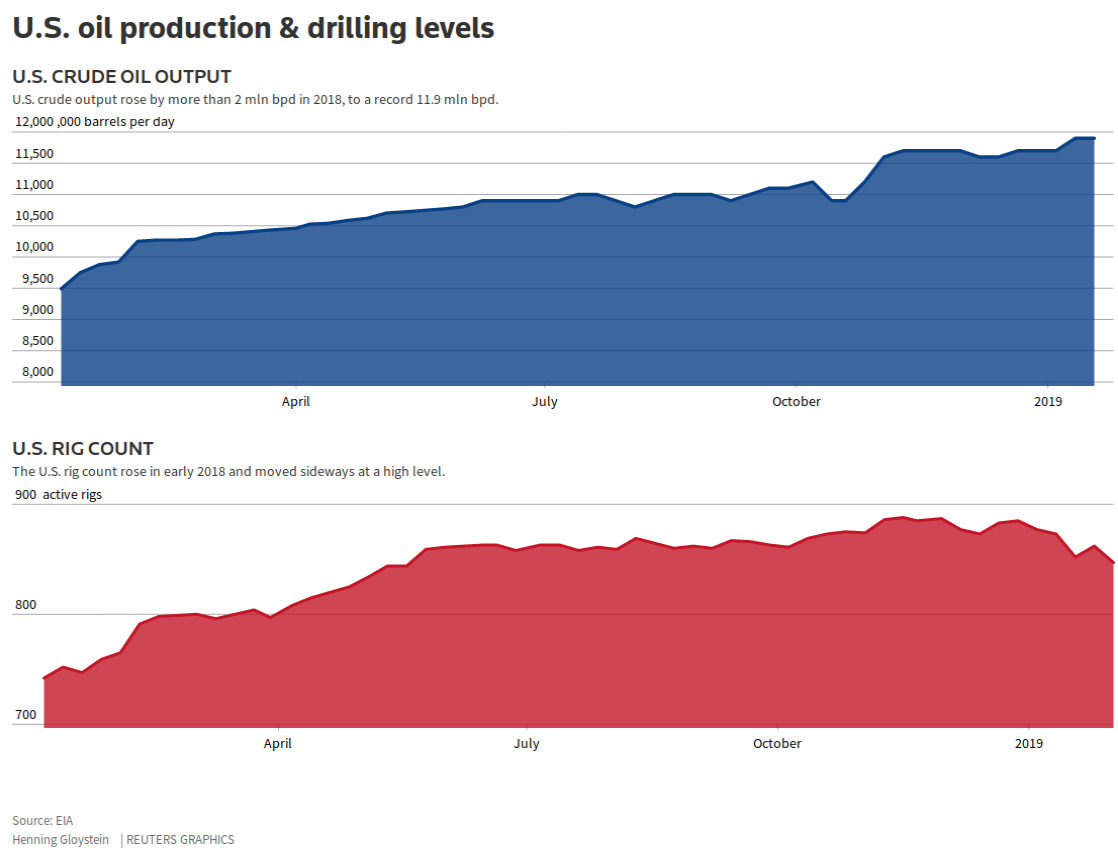
The Organization of the Petroleum Exporting Countries and its allies began a new round of supply cuts in January. These curbs, led by Saudi Arabia, have been compounded by involuntary losses that the Venezuelan sanctions could deepen.
"Oil prices have lacked direction in today's trading session because of mixed market cues," said Abhishek Kumar, senior energy analyst at Interfax Energy in London.
"Insufficient progress made in the US-China trade talks is weighing on prices, although losses are limited by implementation of the OPEC+ deal and concerns surrounding Venezuela's oil supplies."
Brent crude, the global benchmark, hit $63.63 a barrel, the highest since Dec. 7, but was down 86 cents at $61.89 as of 1410 GMT.
U.S. crude hit a 2019 high of $55.75. It later fell $1.18 from the previous close to $54.08.
"You have the sanctions on Venezuela, on top of the reduced supply from Saudi Arabia," said Olivier Jakob, oil analyst at Petromatrix. "There's no sign of overhang in the crude oil markets."
OPEC supply fell in January by the largest amount in two years, a Reuters survey last week found. That offset limited compliance with the output-cutting deal so far by non-OPEC Russia.
The U.S. sanctions on Venezuela will limit oil transactions between Venezuela and other countries and are similar to those imposed on Iran last year, some analysts said after examining details announced by the U.S. government.
While OPEC and its allies are cutting output, the United States is expanding supply. Nonetheless, figures on Friday showed a drop in the number of U.S. oil rigs to the lowest in eight months, lending prices some support.
"This points to a less pronounced rise in U.S. oil production," said Carsten Fritsch, analyst at Commerzbank. "The oil market is more or less balanced," he added, citing the drop in OPEC output to a level close to forecast demand for the group's crude.
The main drag on prices has been concern about a possible slowdown in demand this year due to a weaker outlook for economic growth and developments such as the U.S.-China trade dispute.
U.S. President Donald Trump last week said he would meet his Chinese counterpart Xi Jinping in the coming weeks to try to settle the dispute, and there are hopes that the two sides will come to an agreement.




Comment: See also: